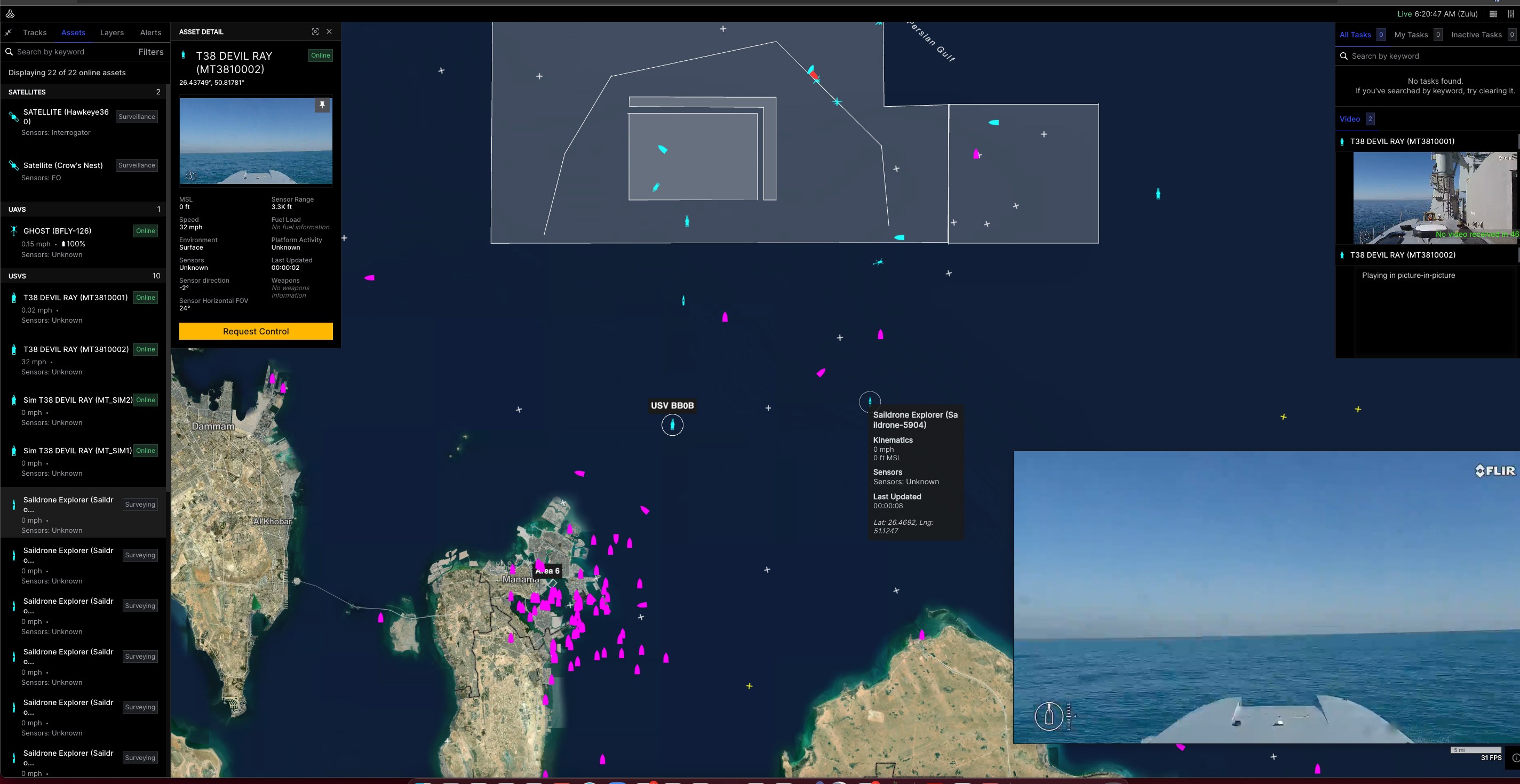His Royal Highness Prince Salman bin Hamad Al-Khalifa, Crown Prince, Deputy Supreme Commander and Prime Minister of Bahrain, center, receives a brief on Anduril’s Ghost small unmanned aerial system at Naval Support Activity Bahrain, Jan. 31. [source]
Anduril joined nearly 9,000 personnel from more than 60 countries and international organizations last week in Bahrain to participate in International Maritime Exercise/Cutlass Express (IMX/CE) 2022, the largest maritime exercise in the Middle East. Anduril’s Lattice operating system was used in several training scenarios, including those related to surface warfare and search and rescue.
Throughout the event, using Anduril’s Lattice OS autonomy software, we:
- Integrated different unmanned systems across three different warfighting domains into Lattice, providing the fused maritime domain awareness generated by the unmanned systems, as well as the unified ability to command and control a mixed fleet of assets in real time, all under a single pane of glass. U.S. military personnel provided valuable input to our engineers that enabled us to rapidly alter the capability to meet their needs and add new features — not in months and years, but in days.
- Enabled one operator to perform tasks that would have otherwise required more than 12 different operators by integrating the unmanned assets into one battle network.
- Enabled a common operational picture across different locations and surface ships, allowing for shared command and control of unmanned assets, and virtual collaboration amid distributed maritime operations.
We did all this and more in support of U.S. Navy efforts to rapidly integrate unmanned systems and artificial intelligence into U.S. 5th Fleet operations.
While many training scenarios were physically carried out by hardware systems, modern software enabled sophisticated integration— the sine qua non of advanced warfighting in the 21st century.
Each of the capabilities we showcased and more are available to the Department of Defense and its partners today. This kind of leap-ahead technology is exactly what the United States and its partners have been crying out for to address a new era of security challenges. Let’s get it in the hands of our warfighters.




